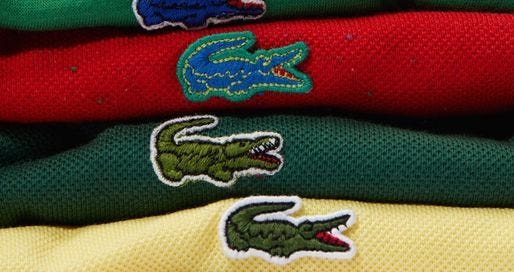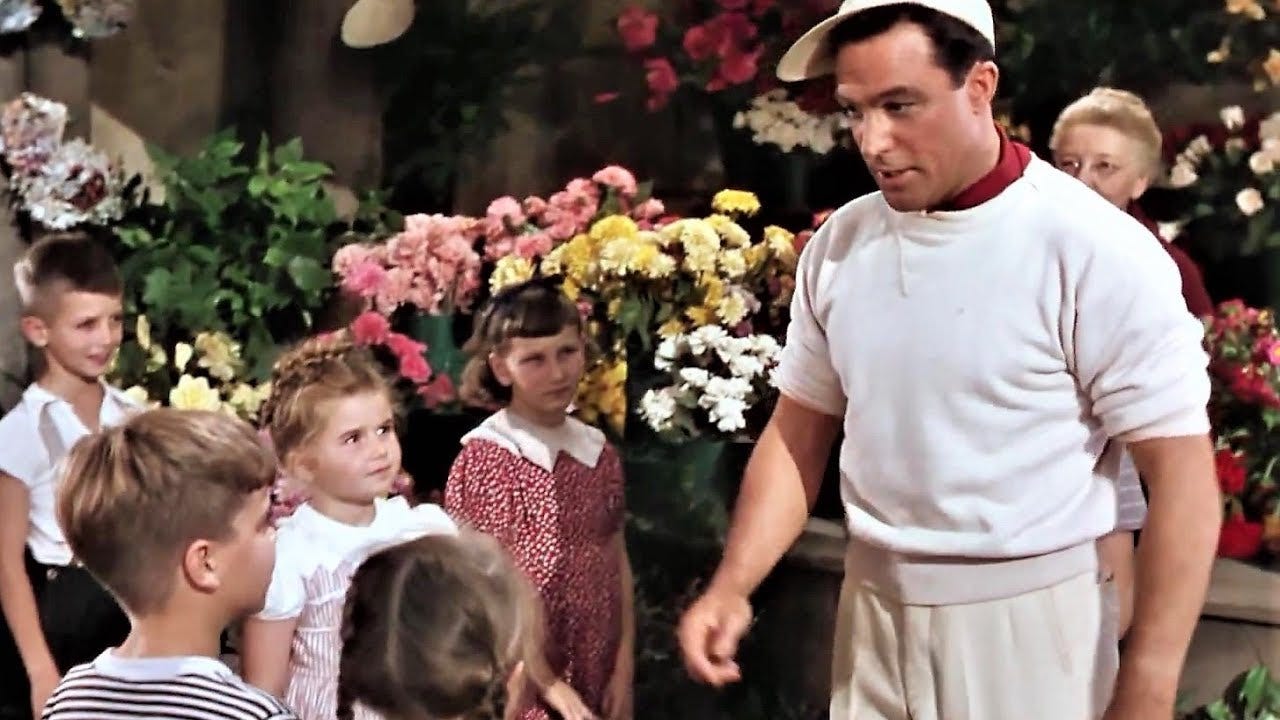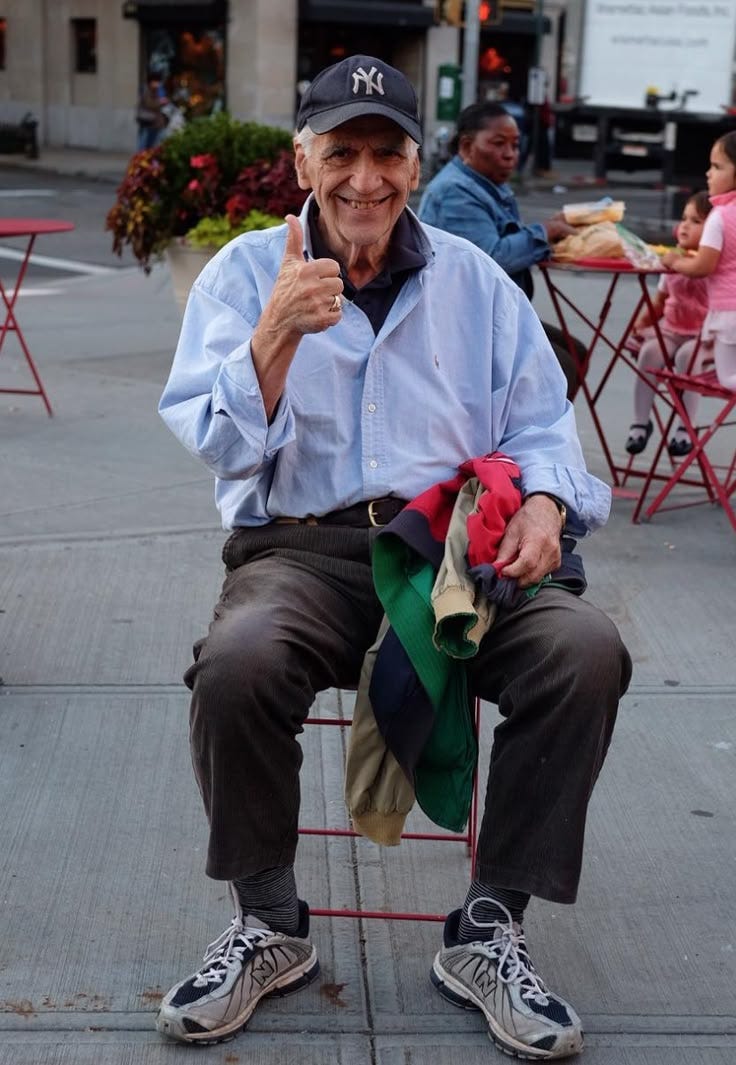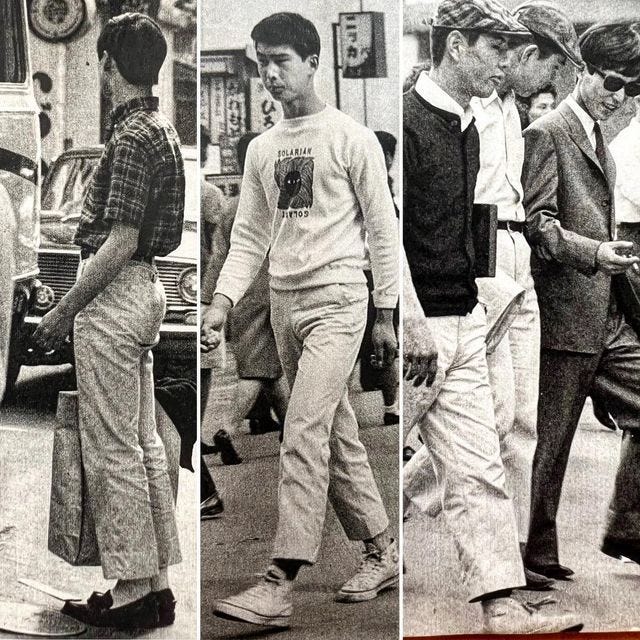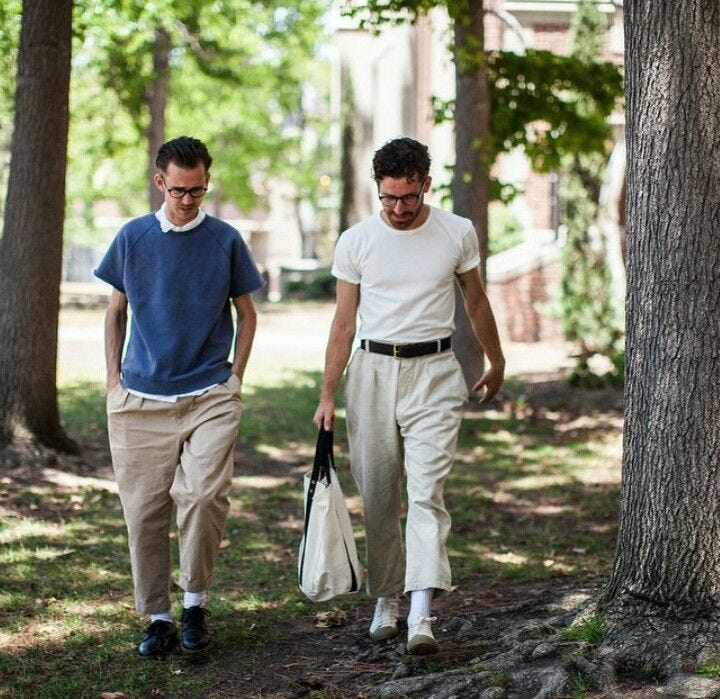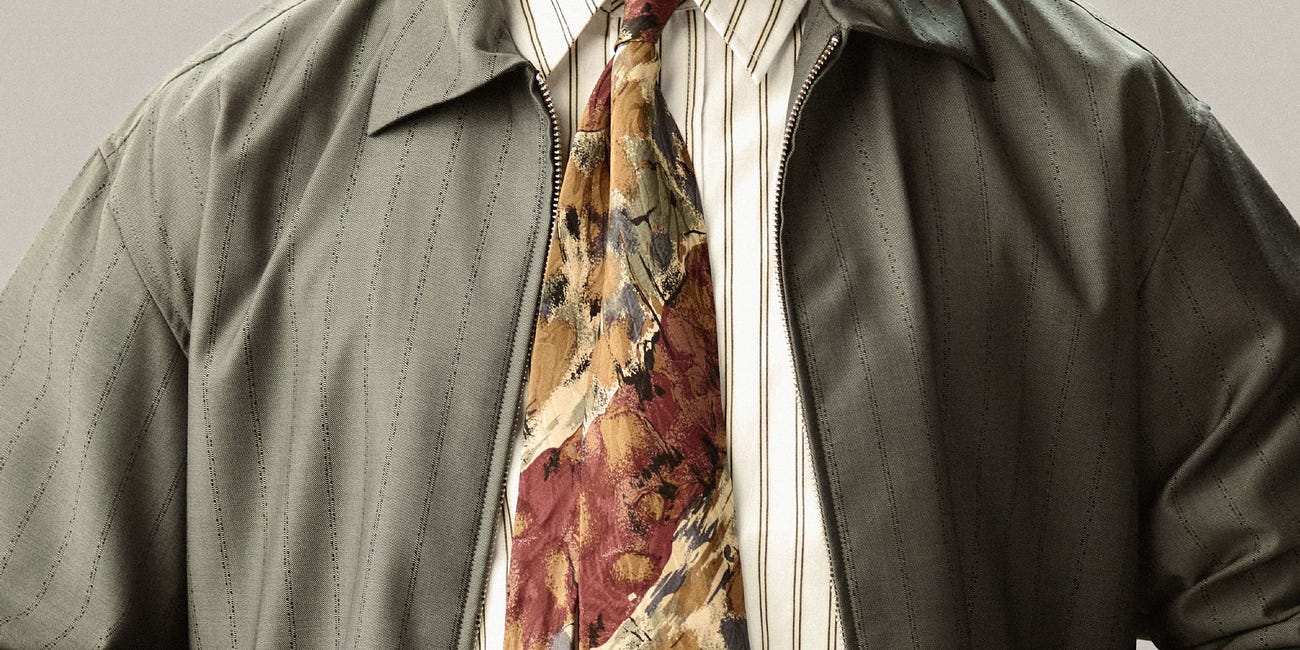We tend to label early autumn onwards as “layering season”, since coming out of Summer, layering is novel. Spring is also layering season, though in a slightly different manner. (Dead Midwinter doesn’t really count for the reason that any and all layers inevitably disappear under the warmest coats in one’s wardrobe.)
The challenge of spring, in many climes, is that of changeability, sudden showers, cold spells, sunny patches, etc., whilst layering is enticing as a tool for outfit creation, it is quickly revealed when it’s a crutch. Today I’d like to present layer resilience, a topic of discussion once before, in greater detail. I wish to make the case for a more holistic approach to making outfits from layers, and some avenues into how you might do that. Then, it’s time for the club’s seasonal vibe check, some layers that are good examples of the above, general bits and pieces for your consideration when it comes to spring dressing (with apologies to club members in the Southern Hemisphere, see an autumn vibe check here).
Welcome to this week’s meeting of The Prep Club, check last week’s issue of THE RADAR here, for thoughts on quality proxies and how ALD styles ties, among other queries vaguely shoehorned into the world of collegiate fashion. Also make use of The Directory, new this week:
Mallin & Son - Osset, UK, E-comm - Principally a wax jacket restoration shop based in Yorkshire, also carry a small collection of restored jackets as stock available for purchase.
Arrow - A staple shirtmaker of the twentieth century, and the first to patent the Sanforizing process. Caution is advised, look only for vintage examples, made in USA of 100% cotton.
Small Favour: If you wouldn’t mind, please share this post, or the club as a whole, with a friend who you think might be interested, it would mean a whole lot. Please also subscribe if you haven’t yet, again, it makes a big difference.
Layers are a bit of a cheatcode, it’s a damn sight easier to make a good outfit with them than without. In a way it’s a sort of shotgun attempt, there’s just more instances where a look can hit, in a particular garment, how two or more interact, or in the resulting silhouette.
This is a big part of why old Ralph Lauren posters and modern day ALD look-books look so good, layers upon layers, sometimes as many as five or six. It’s a trick to show more products in one photo mainly, but it also builds a desire, since this is advertising and that’s what it’s designed to do, for heavily layered looks.
The thing is, layers, practically, are not supposed to be static. The point of having layers in an outfit is in part so that the wearer has available to them various amounts of warmth which they can change between throughout the day. This poses a challenge when layers are the sole source of an outfit’s sauce. You’re left sweating and sitting uncomfortably cause the moment the jacket comes off you stop looking like you know how to dress yourself.
Hence, what I call layer resilience, an over-intellectualisation of the idea that an outfit should look great at all stages of layering. Going forwards, we’re going to operate on the basis of about three to four visible layers, and take a look at putting this in practice.
Granular Outfit Creation
This is a good time to address that this sort of thing will come naturally, if you’ve already got a good sense of how to put an outfit together you probably do it subconsciously. I reckon it’s worth breaking down and spelling out regardless.
A layered outfit should in fact be layered outfits, that is to say that with each additional layer, there should be an evaluation of the sauce levels of the ensemble. Starting with the base layer/ pant interaction, looks with a matching shirt and pants with contrasting outerwear are particularly at risk here, you can absolutely pull off white jeans, white Oxford, you just need to check that you are in fact pulling off white jeans, white Oxford.
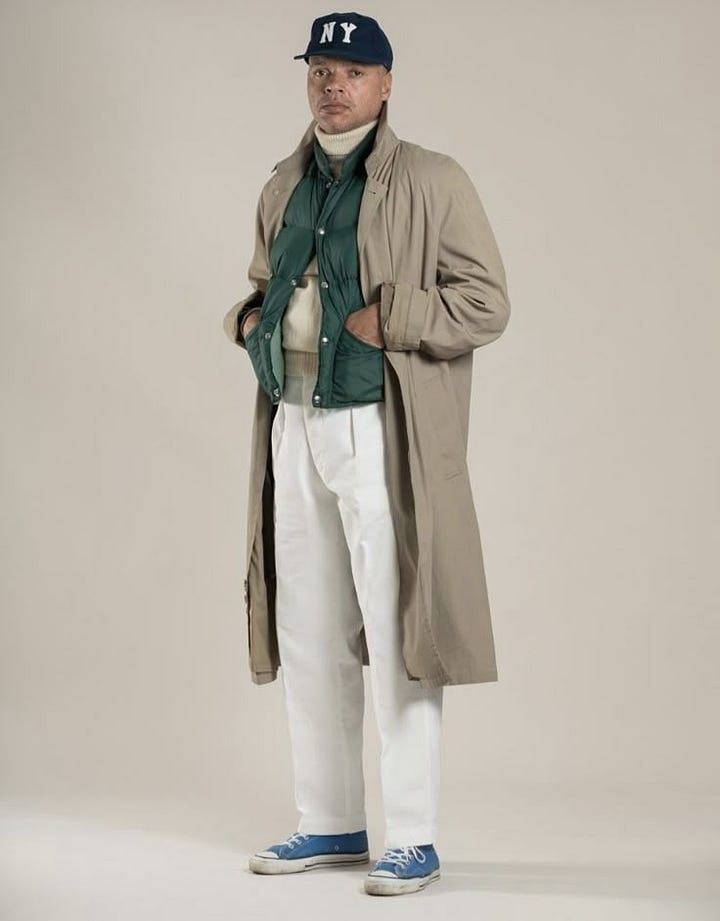
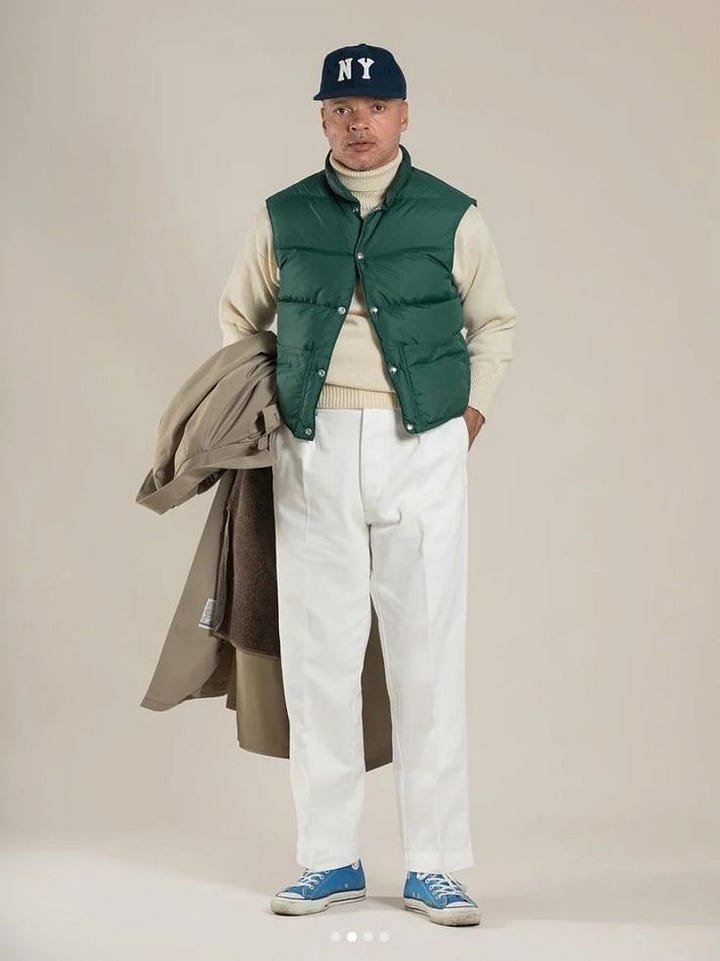
Likewise, visualise, or try on, an outfit with mid layers removed, just the coat, sweater, shirt or just the jacket and t-shirt. At some point you’ll decide which piece counts as your base layer, sometimes it’s the undershirt (which in my humble opinion should always be worn), sometimes it’s a shirt or sweater on top of that, the piece which you know you won’t be taking off at any point.
Like I said, this usually comes naturally when making a good outfit, but if you’ve ever got a layered fit that just isn’t working for yah, this is probably why.
Kinaestheticism
We’re all about the big words today (we always are), we’ve appropriated kinaestheticism in fashion discourses to refer to how an outfit relates to the things you’re doing in it. Again, it’s something that should come naturally, but can disappear in that gap between not caring at all and caring holistically about a look.
Basically, don’t lose sight of layers as a practicality first. We come back to it time and time again here but form follows function is a about the closest thing to gospel we heathens keep to. Runway and lookbook fashions are permitted to abscond practicality in pursuit of abject beauty, you are not afforded the same privilege, you have to get on public transport or go get groceries or something, walk in the cold evening to a bar heated by the bodies of three dozen patrons.
It is, for this reason, why you must beware The Cool Jacket, I see it a lot in some more modern ivy inspired looks, a very plain base of shirt, tie, jeans, and then a cool jacket as the only marked difference between the look and business casual. It’s fine, as long as you feel comfortable in the look without the jacket, because at some point it’ll need to come off.
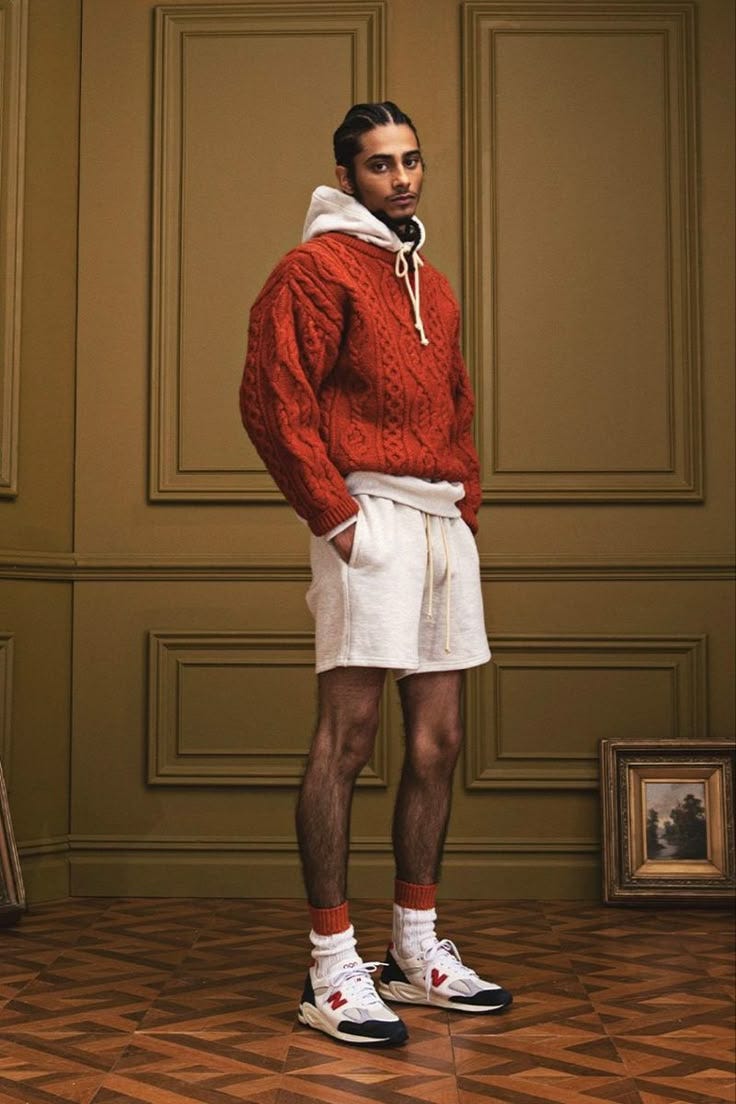
There’s also the consideration of whether/how, a given garm can be removed. Whether a jacket will fit in a bag without getting creased to shit, a sweater can be tied around the waist or shoulders. If something’s a pain in the arse to get in and out of, vintage knitwear is a common culprit for this, then it’s automatically going to become the base layer of a look, and thus there needs to be an evaluation of whether you’re gonna be sweatin’ in it.
Closing Thoughts
As I said, this, really, is a gross over-intellectualisation of just allowing the real world to inform the shit you put on in the morning, like your parents used to tell you to do. It is a risk though, if we rely solely on lookbooks, advertisements, social posts, on photos in general to learn how to dress ourselves, that this sort of thing gets overlooked. I also think outfits with layer resilience communicate about the wearer a deep understanding of how to build an outfit, if that sort of cultural capital means a lot to you, look to build outfits that look great at all stages of assembly, layer responsibly.
The Spring Layer Vibe Check
Polo Styling
At some point recently, knit polos were adopted into the canon of clothes you can wear as a straight guy and other straight guys won’t call you gay, which, regrettably, is still very much a thing, we are in a bubble here. In the process of the knit polo’s adoption, the classic pique polo has fallen to the wayside. For many it’s associations with golf courses, 2000s frat parties and double popped collars, or worse with certain white nationalists, makes it a tough nut to crack. Getting away from that with some considerations of fit and styling isn’t really too hard though.
Firstly, picking a polo, this is the easiest buying guide I’ve ever written. Get a vintage Lacoste one, made in France. They invented it, no one else has ever really improved on it, and they’re cheap. I’m inclined to go for a bold(ish) colour too: navy, green, blue, red, pink, orange, would be my picks. If you don’t want a crocodile logo on your chest, tough, a logo is kind of part of the polo visual language, without it we stray back into polos that look quite tired.
As for some combos:
Polos under Crew-Necks -
A polo is a sports shirt, a tennis shirt specifically, and thus is very at home with more sportswear. A vintage style double gusset crew neck sweatshirt is a very welcome addition. A more neutral colour (I’d consider navy and dark green in that camp) is welcome here if the polo is a bold tone, but that couldn’t be less of a soft line, any well considered colour combo is great here, tonal looks too.
Polos under Oxfords
Ok, the restrained and practical option out of the way, time for a full-bore-prep special. This is the sort of look you need to just commit to. Going for a plain polo opens up pretty much any pattern for the Oxford, I’m inclined to go more oversized for the button down too, that helps to distract from the fact you’ve got two shirts on. Tucked or untucked are both great looks too.
Short Sleeves
I’ve detected a deficit in the wearing of short sleeved garments, besides tees and polos, it’s not very common to see folks these days opt for a short sleeved garm. I think that’s a shame.
Shirts
These I feel have been the greatest casualty of the short sleeve cull, if you look back at any of our go-to, classic Ivy materials, they’re everywhere but these days they’re seldom seen.
Plain ones struggle to shake that, door-to-door salesperson connotation, especially when worn with a tie but the short sleeves of days gone by tend to be tartan or madras checks anyway. They also tend to be more generous in cut, so oversizing is very much on the cards.
Sweatshirts
Also feature prevalently in Take Ivy and the like, for a time the short sleeve sweatshirt was banished to the jock-stereotype zone, hooded ones still are really, but a well made retro crewneck option has plenty of capacity to hit. I think at times when someone wears a heavyweight, boxy t-shirt, what they really seek is the weight and structure of a short sleeve sweat. They’re also uncommon enough to be a point of intrigue in an outfit.
To summarise, outfits change throughout the day and polo shirts are underrated, thanks for your time. Prep Club adjourned, catch you later.
Proxies / Interrogations / A tie lesson from Aime Leon Dore / Minimalism and Texture
Hello! Welcome back to THE RADAR, The Prep Clubs’s new fortnightly digest for interesting bits and pieces in the sphere of collegiate threads. You can attend last week’s meeting here, for things to do before you buy more clothes.


